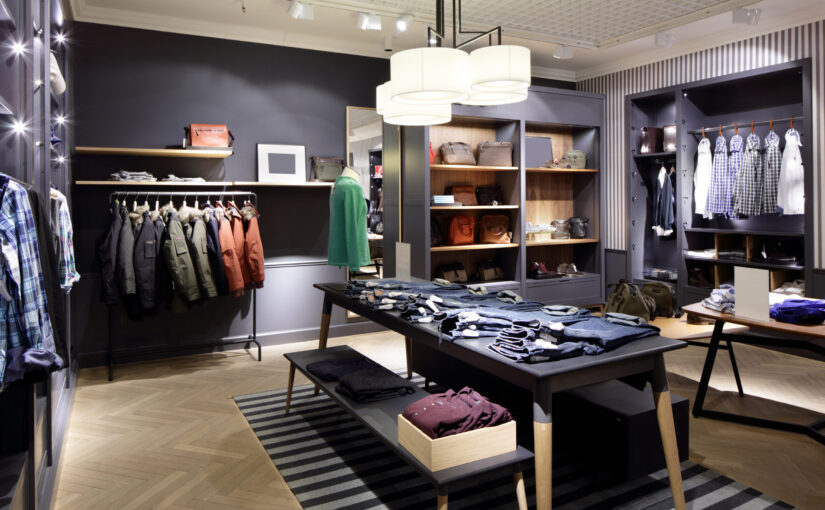Commercial Painting of Retail Stores: Crafting First Impressions and Brand Representation
In the competitive world of retail, creating a strong and lasting first impression is crucial. The appearance of a retail store is often the first point of interaction between the brand and its potential customers. This is where commercial painting plays a pivotal role. The choice of colors, textures, and overall quality of a store’s paint job can significantly influence customer perception and, ultimately, their decision to engage with the brand. This article delves into the importance of commercial painting in retail environments, focusing on its impact on first impressions and brand representation.
The Impact of First Impressions
First impressions in retail are formed within the first few seconds of a customer viewing a store. The color scheme, quality of the paintwork, and overall aesthetic appeal are integral components of this initial impression. A well-executed paint job can convey professionalism, attract attention, and encourage customers to step inside. Conversely, peeling or faded paint can suggest neglect, potentially deterring customers from entering the store.
Brand Representation Through Colors and Design
The color scheme of a retail store is not just about aesthetics; it is a direct reflection of the brand. Each color has psychological connotations and can evoke certain emotions in customers. For instance, blue can convey trust and dependability, while red can create a sense of urgency or excitement. Selecting the right colors can help in reinforcing the brand’s identity and values.
It’s not just the color itself but the quality and finish of the paint that matters. A high-quality paint job using durable materials speaks to the brand’s commitment to quality and can enhance the customer’s overall perception of the store.

Creating an Emotional Connection
Color psychology plays a significant role in shaping customer emotions and behaviors. The right choice of colors can evoke specific feelings – for instance, green for tranquility and harmony, or yellow for happiness and optimism. This emotional connection can be a subtle yet powerful tool in making the store more inviting and in creating a positive mood as customers enter the space.
Strategic Use of Colors for Different Retail Settings
The choice of color can vary greatly depending on the type of retail store. For example, a luxury boutique might opt for muted, sophisticated color schemes to create an ambiance of exclusivity and elegance. In contrast, a children’s toy store might use bright, primary colors to create a fun and energetic atmosphere.
The strategic use of colors can also influence customer behavior. Certain colors can stimulate appetite, making them ideal for food retailers, while others can create a calming effect, suitable for wellness or health-related stores.

Reflecting the Target Demographic
The choice of colors and the style of the paint job should resonate with the store’s target demographic. A youthful, trendy brand might opt for bold and contemporary colors, while a store targeting an older, more conservative demographic might choose classic and timeless hues. Understanding the preferences and expectations of the target audience is crucial in making a positive first impression.
Maintaining a Consistent Brand Image Across Locations
For retail chains, maintaining a consistent color scheme and quality of paintwork across all locations is crucial for brand recognition. Customers expect a uniform experience whenever they visit any of the brand’s stores. This consistency in design and color helps in strengthening brand identity and fosters customer loyalty.
The Role of Professional Commercial Painters
The complexities involved in choosing the right color scheme and executing a high-quality paint job necessitate professional expertise. Commercial painters who specialize in retail spaces understand the nuances of how colors interact with lighting, store layout, and brand image. They can provide valuable insights into current trends and how to best represent the brand through retail store painting.
Professional painters also ensure that the painting process is conducted with minimal disruption to the store’s operations. They use durable, high-quality paints that can withstand the wear and tear typical in high-traffic retail environments, ensuring that the store maintains its polished look for longer periods.
Sustainability and Eco-Friendly Practices in Painting
In an era where sustainability is increasingly important, choosing eco-friendly paints and sustainable practices can further enhance a brand’s image. Using low-VOC (Volatile Organic Compounds) paints improves indoor air quality and demonstrates a commitment to environmental responsibility, an aspect that is particularly appealing to the modern, eco-conscious consumer.
Conclusion
The commercial painting of retail stores is more than just a necessary maintenance task; it is a crucial element in brand representation and customer perception. A well-chosen color scheme and a high-quality paint job can create a positive and lasting first impression, encourage foot traffic, and reinforce brand identity. In the highly visual and competitive world of retail, the power of a well-painted store cannot be underestimated. It is an investment that pays dividends in customer attraction, brand loyalty, and overall business success.

